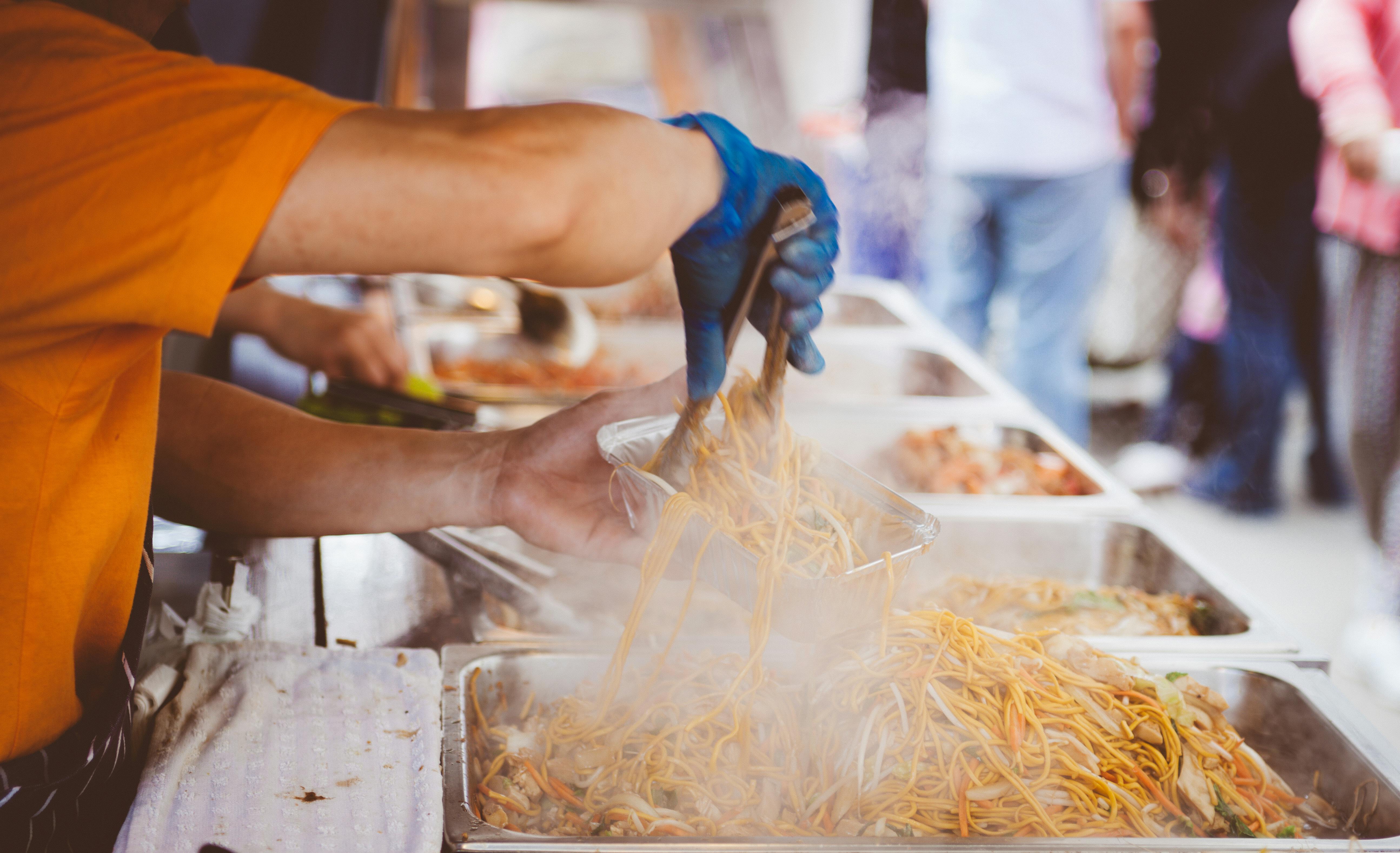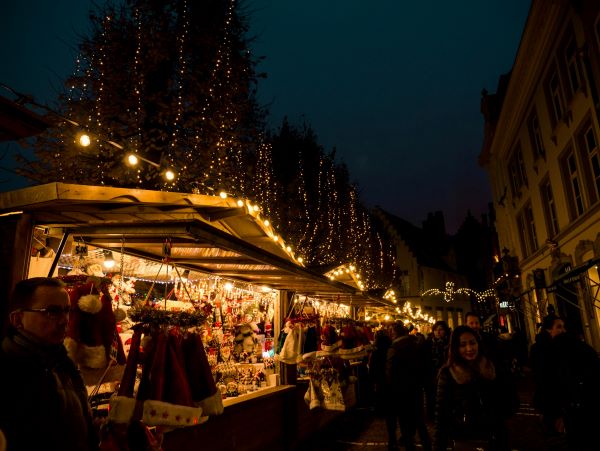Published on: 28 August 2025
Festivals and events provide a great opportunity for food vendors to showcase their culinary talents and turn a profit. From small local events to large music festivals like Glastonbury, there is no shortage of opportunities to offer festival goers and event attendees delicious food and drink. However, competition can be fierce and the process for procuring a catering pitch can sometimes be tricky to navigate. In this guide, we will explore how to find the right festival for your catering business, what to expect from the application process and much more!
Finding the right festival for your catering business
While larger festivals and events offer more footfall and potential profits, they also come with increased competition. Alternatively, smaller festivals with a lower attendance may only have capacity for a few catering pitches and therefore present ample opportunity for business (pitches usually cost a lot less, too!). For novice caterers, it’s advisable to start small and gain valuable experience before targeting larger events.
How much does it cost to sell food at a festival?
Bear in mind that the cost of a catering pitch typically increases with the size and profile of the event, and the organiser will normally expect to be paid upfront. Catering pitch fees can range from a few hundred pounds to as much as £10,000, making some festivals unattainable for new or smaller businesses. Always factor in pitch costs alongside stock, staff, fuel and power before committing.
Research the event demographic
When attending a festival or event as a food vendor, it’s essential to understand and research the demographic to ensure that the food you offer is going to be a good match. Festival catering staples such as hot dogs, burgers and fish and chips are always going to be popular but may not stand out from the crowd at larger festivals. Engage with other vendors at the festivals you plan to attend and learn from their experiences, then consider how you can differentiate yourself and create a lasting impression that will help with reputation-building for future events.
How to get a catering pitch at events
There are two ways to apply for a catering pitch at a festival or event. Large, well-established festivals will normally have dedicated pages on their official websites where catering vendors can apply for pitches. The other way is through third party festival partners, contracted by the festival organisers to look after catering procurement.
The process usually starts in the autumn for festivals taking place the following summer, so it's always best to put the wheels in motion as early as possible. The application form will typically request the following:
- Your contact details and business number
- The type of food and drink you sell
- The dimensions of your stall
- What prior experience you have
- How many parking passes you’ll require
- What your electrical requirements are
You’ll also need to provide evidence that you comply with food hygiene requirements, such as a food hygiene certificate.
If the festival or event is on public land you will most likely require a street trading licence and you’ll need to register as a food business with the relevant local authority. These won’t be required if the event is on private land.
Festival and event organisers will typically have hundreds if not thousands of applications to go through. To ensure your application stands out, provide good quality imagery and an eye-catching brand design. Finally, always read the contract thoroughly before signing to ensure you fully understand the terms and conditions.
Estimating festival catering capacity
Once you have secured a catering pitch, the next step is to estimate your capacity. This involves determining how much food and drink you will need to cater for the expected number of attendees at the event. Estimating your capacity is essential for ensuring you have enough supplies to meet demand and avoid running out of stock during peak periods.
The first step to estimating your capacity is to research the event and the expected attendance. This can involve looking at the previous year's attendance figures, as well as any marketing materials or press releases from the festival organisers. You can also reach out to the organisers directly to ask for an estimate of the expected attendance.
Once you have an estimate of the expected attendance, you will need to consider the following factors:
- Average spend per person - Research the average spend per person at similar events to determine how much money you can expect to make per attendee.
- Menu items and pricing - Consider the menu items you plan to offer and the pricing for each item. This can help you calculate how much food and drink you will need to cater for the expected number of attendees.
- Peak periods - Consider the peak periods during the event when demand for food and drink is likely to be highest. This will enable you to determine how much food and drink you will need to prepare during these periods.
Unique challenges with festival and event catering
Catering at a festival or event in the great outdoors will always come with a different set of challenges than serving food in a restaurant or café. It’s best to be aware of any problems that may crop up, so you can be prepared:
- Outdoor pitches require setup, which you will be given time to do before the event is open to the public. Some larger festivals allow vendors to set everything up the night before, especially if it’s an early start the next day. You can practise setting up at home beforehand so you know how long you might need,then be sure to arrive at your designated pitch with ample time to get everything
- Queues! This may seem like a good thing – a lot of people are interested in buying your food - but you don’t want your customers to wait too long for their order. Unlike a sit-down restaurant where diners can chat and relax while waiting, at a festival your customers will have a variety of other vendors to choose from, so ensure your service is efficient and quick.You can even take orders quickly, then use guest pagers to call customers back when their food is ready.
- The weather is an undeniable challenge when it comes to festival catering. If there’s a lot of rain, you may get fewer customers, so check the weather forecast (though it’s unpredictable) to give yourself a better idea of what to expect. You can set yourself up with an awning, so attendees have shelter while they’re ordering and waiting for their food. With high winds, ensure your gazebo is well clamped down with weights so it doesn’t go flying. If the weather is truly terrible, don’t be surprised if smaller events such as local markets end up being cancelled.
How much profit can food vendors make at festivals?
Considering the potential profits of catering at a festival or event is crucial before investing your time and resources. Although many festivals attract a large footfall, the effort and expenses involved can outweigh the benefits if profits are not made.
Estimating how much you can make, especially if this is your first event, can be a risky business, but you can make reasonable predictions by taking the following factors into account:
- Calculate the absolute maximum you could make based on realistic trading hours, service time for each order, number of staff and price of product.
- Add up costs, including pitch cost, festival organiser’s cut of profits, power rental or generator costs, stock, staff wages, fuel costs and sample costs.
- Ensure you have enough equipment to meet the increased demand at the festival.
- If the profit margin isn’t high enough, consider attending another festival.
- Keep estimates conservative if it’s your first festival.
Other top tips for catering at events and festivals
- Promote your stall using the festival or event hashtag. Include your social media handle on signage so attendees can tag you.
- Grab a map and familiarise yourself with the festival layout.
- Find out what other food vendors will be there. Knowing who your competitors are will help you plan how to stand out from the crowd.
- Consider having vegetarian, vegan or gluten-free options on your menu to stand out for any customers with dietary requirements.
- Know the hours of operation. If the event continues into the evening, find out whether lighting is provided.
- Decide which payment methods you will accept. Consider taking a cash till (with change), and definitely bring a credit card reader for your phone or iPad. Establish the wifi situation at the event and bring along a hot spot if required.
- Be prepared for all kinds of weather. Pack waterproofs, wellies, a portable fan and extra containers.
Last (but most definitely not least)…
Consider taking out event catering insurance.
Catering at events or festivals is not without risk. From accidentally scalding a customer’s hand with boiling water to an employee causing damage to the venue, it’s always wise to protect yourself in case of unforeseen incidents – in fact, many festival organisers insist you have public liability insurance in place before considering your application.
Here at Events Insurance, our event catering insurance is designed to give food vendors and catering providers peace of mind that should an incident occur, your legal fees and compensation claims will be covered, allowing you to focus on what’s really important – feeding hungry festival and event attendees! Contact us today for a quote.
Have we got you thinking about event insurance?
22,435
Trees planted
so far.
ONE TREE PLANTED FOR EVERY POLICY PURCHASED
Award winning event insurance














